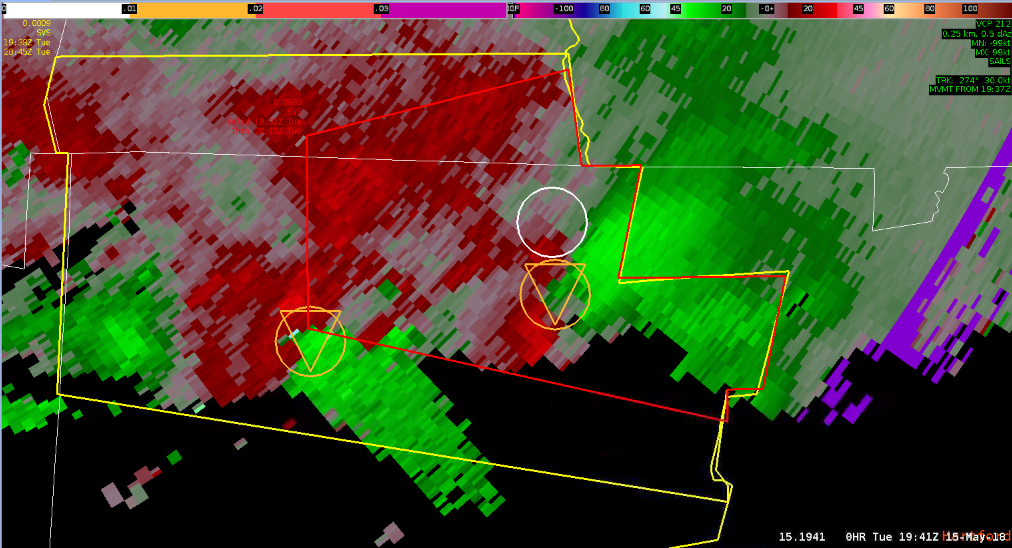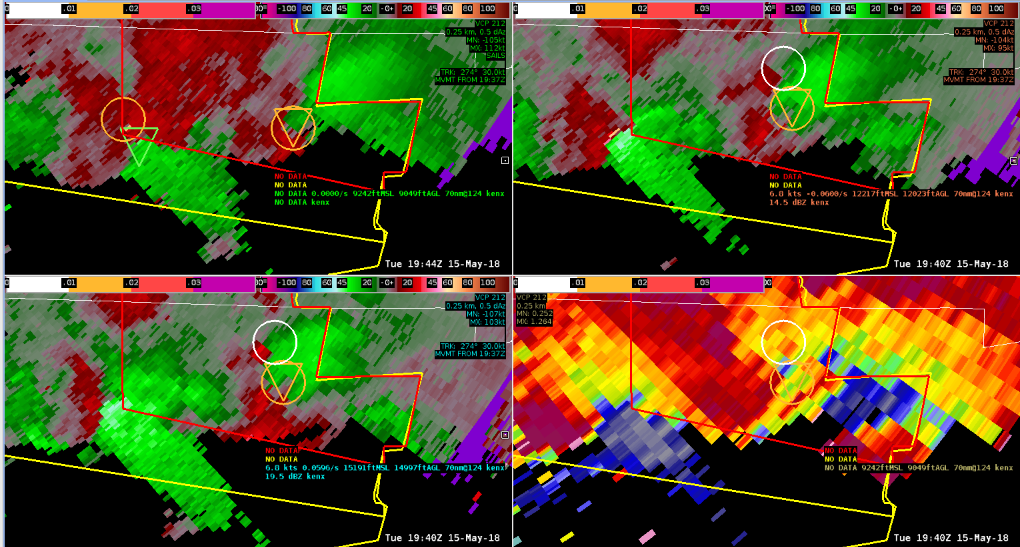Interesting challenge in today’s Archived Case from WFO ALY. One particular challenge was the presence of Three Body Scatter Spikes (TBSS) present within the inflow region of supercells south of the RDA causing the radar beam to strike hail prior to the rotational signature. Since this phenomenon was more so identified on the lowest tilt, I did not witness any significant anomalously high probabilities from the algorithm, but it did identify a centralized area of rotation (see “stacking” of NMDA and NTDA in images below).
In the meantime, damage from a tornado was being reported in the lead (eastern) cell, which also had lower-end probabilities but within a more trustworthy region of velocity – owing to confidence in the warning. However, using meteorological “common sense” gave me the ability to take the western cell’s algorithm detection less seriously.
Is this a weakness or a strength in the algorithms? Depends on how you look at it. For the lead storm, I was a bit surprised on the lower probabilities, but for the western cell, it gave a prime example on the limitations that exist and where you, the forecaster, come in by having that situational awareness at hand to identify false signals.


– Dusty Davis
